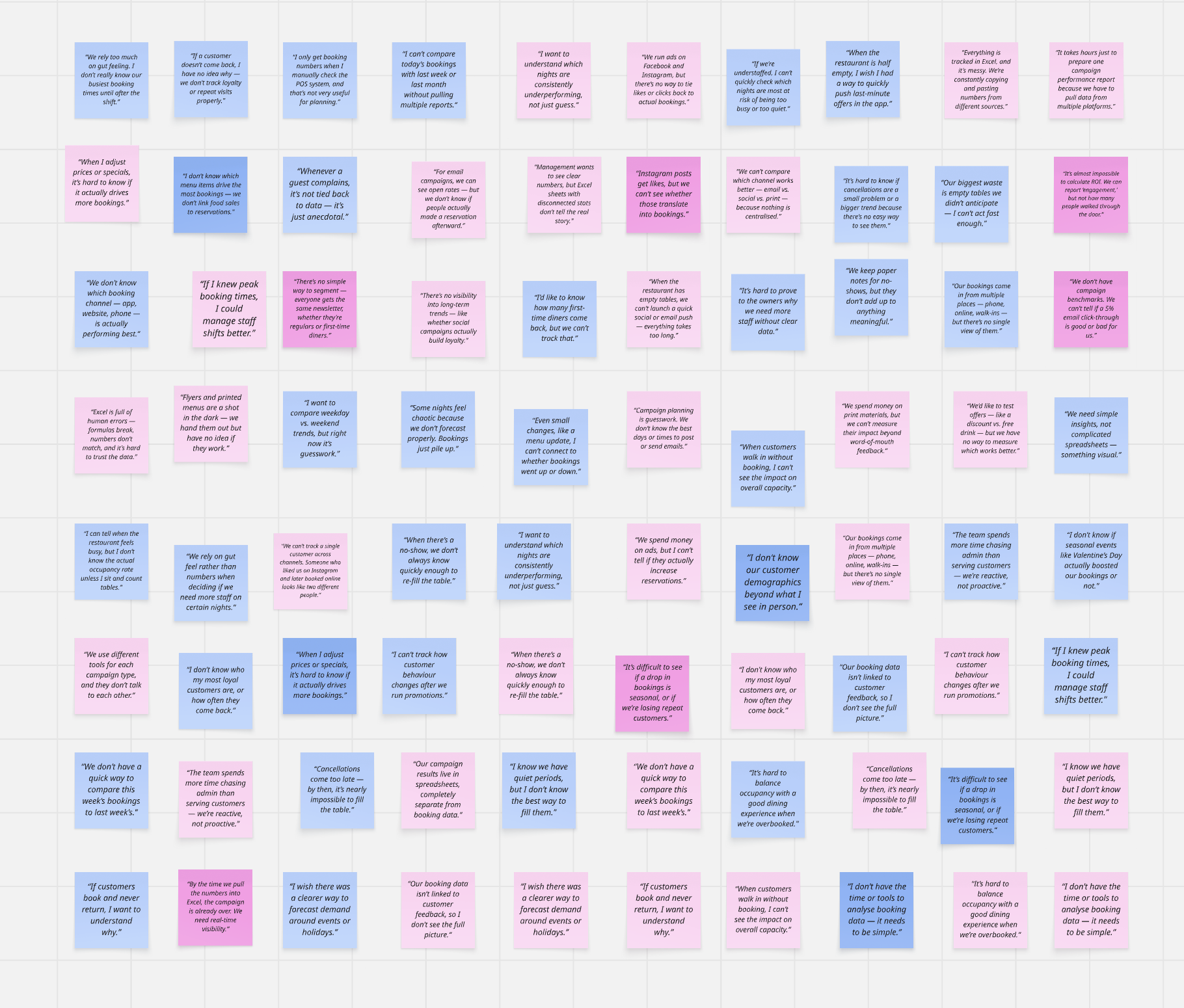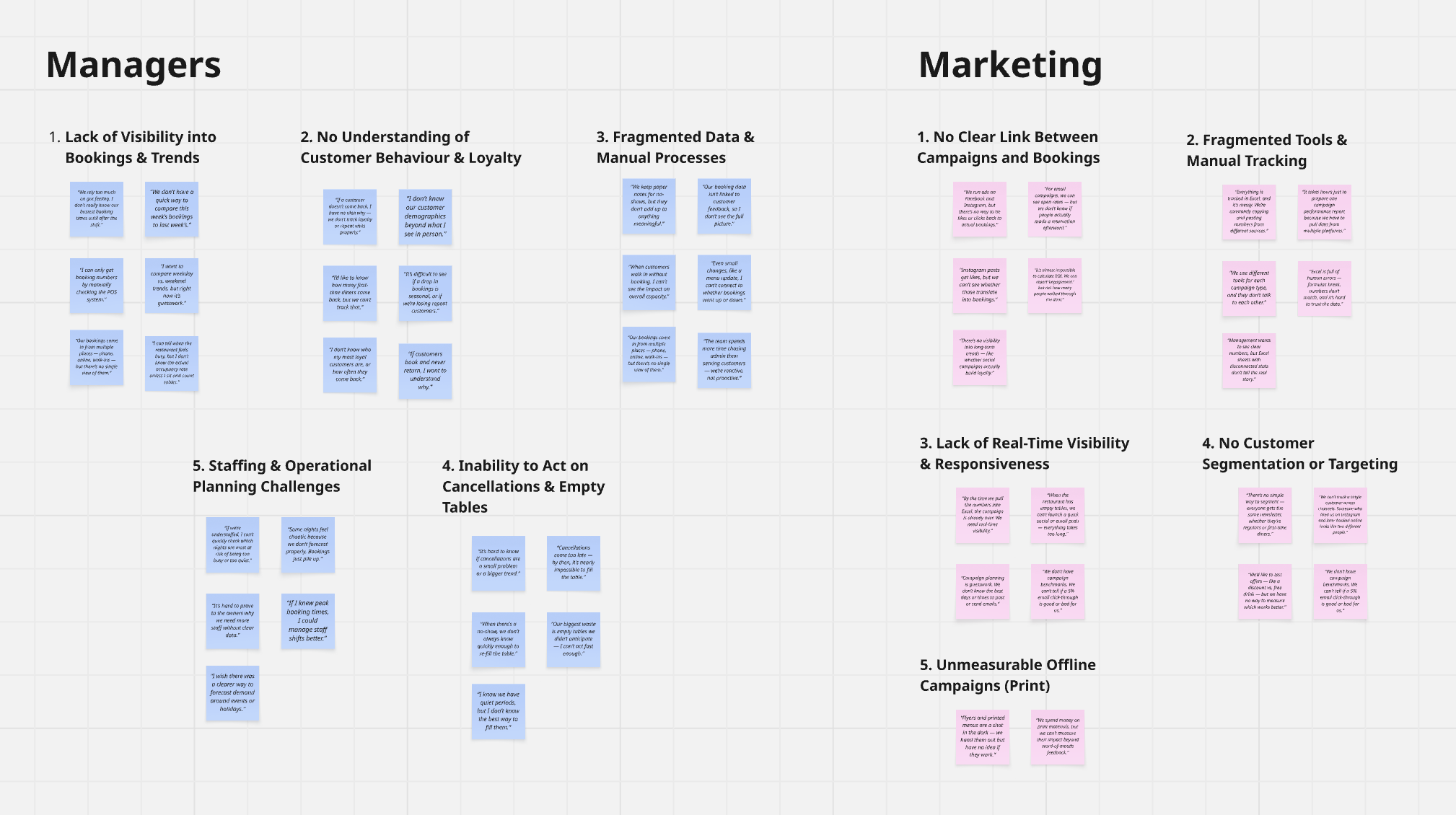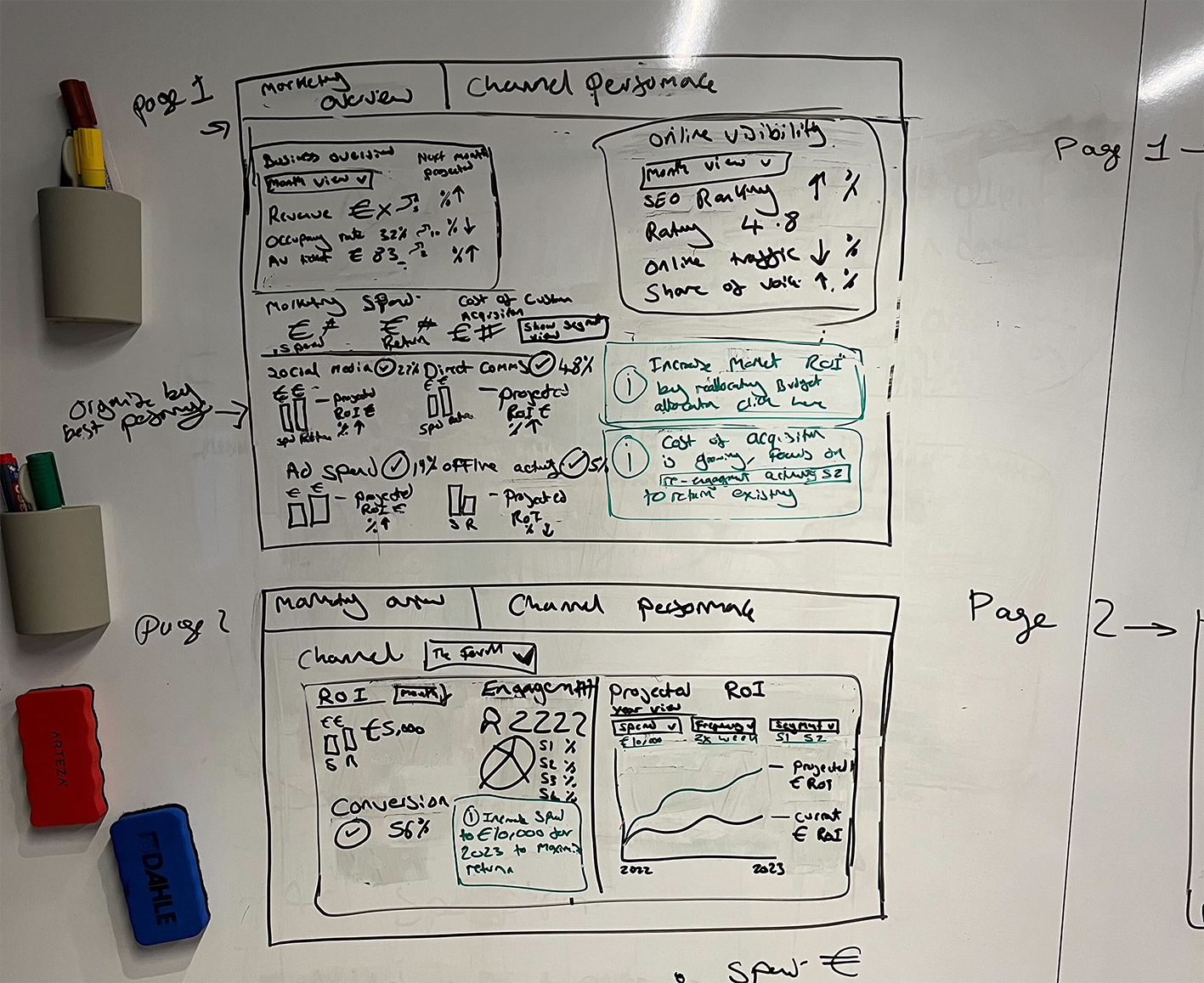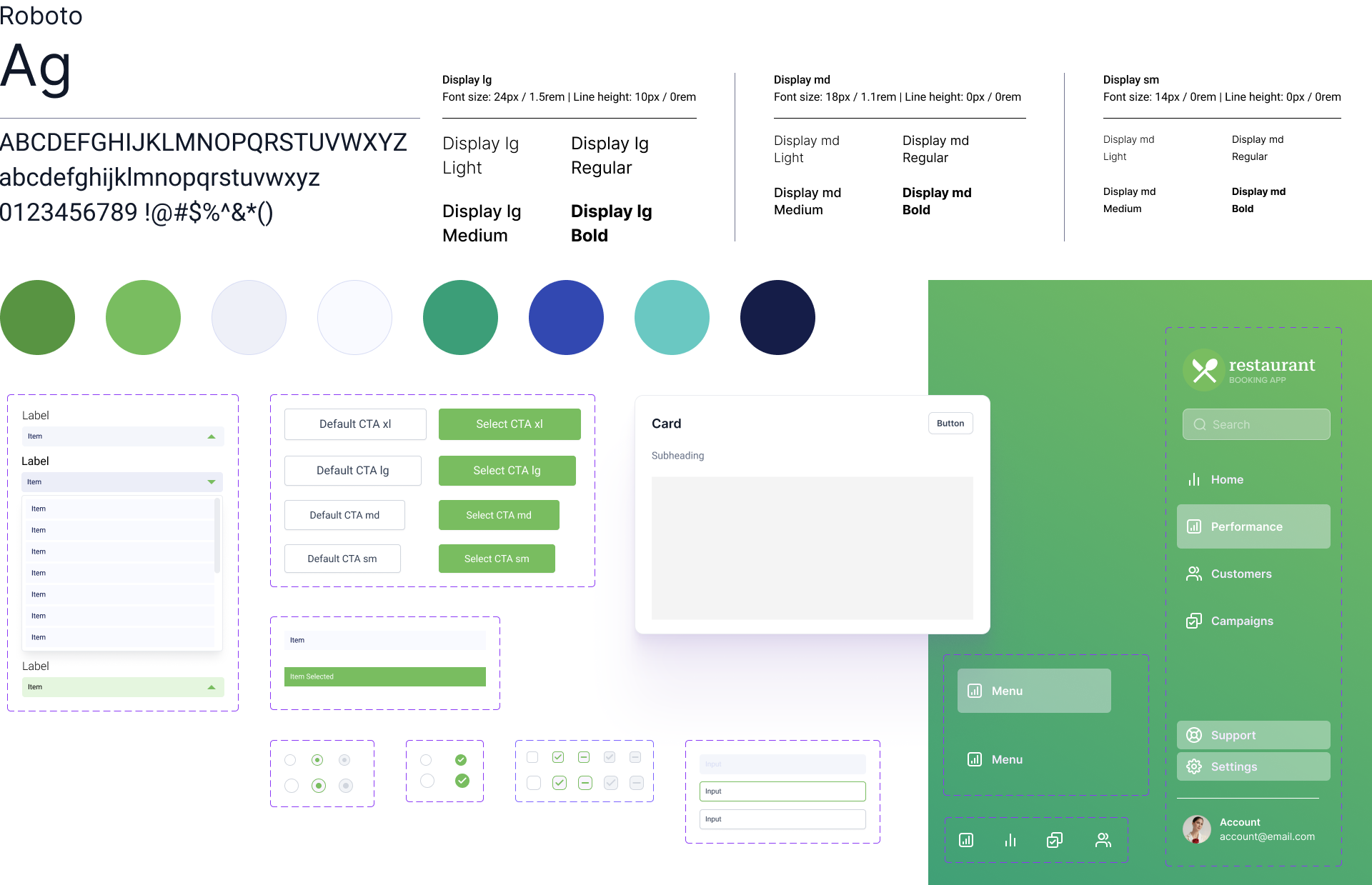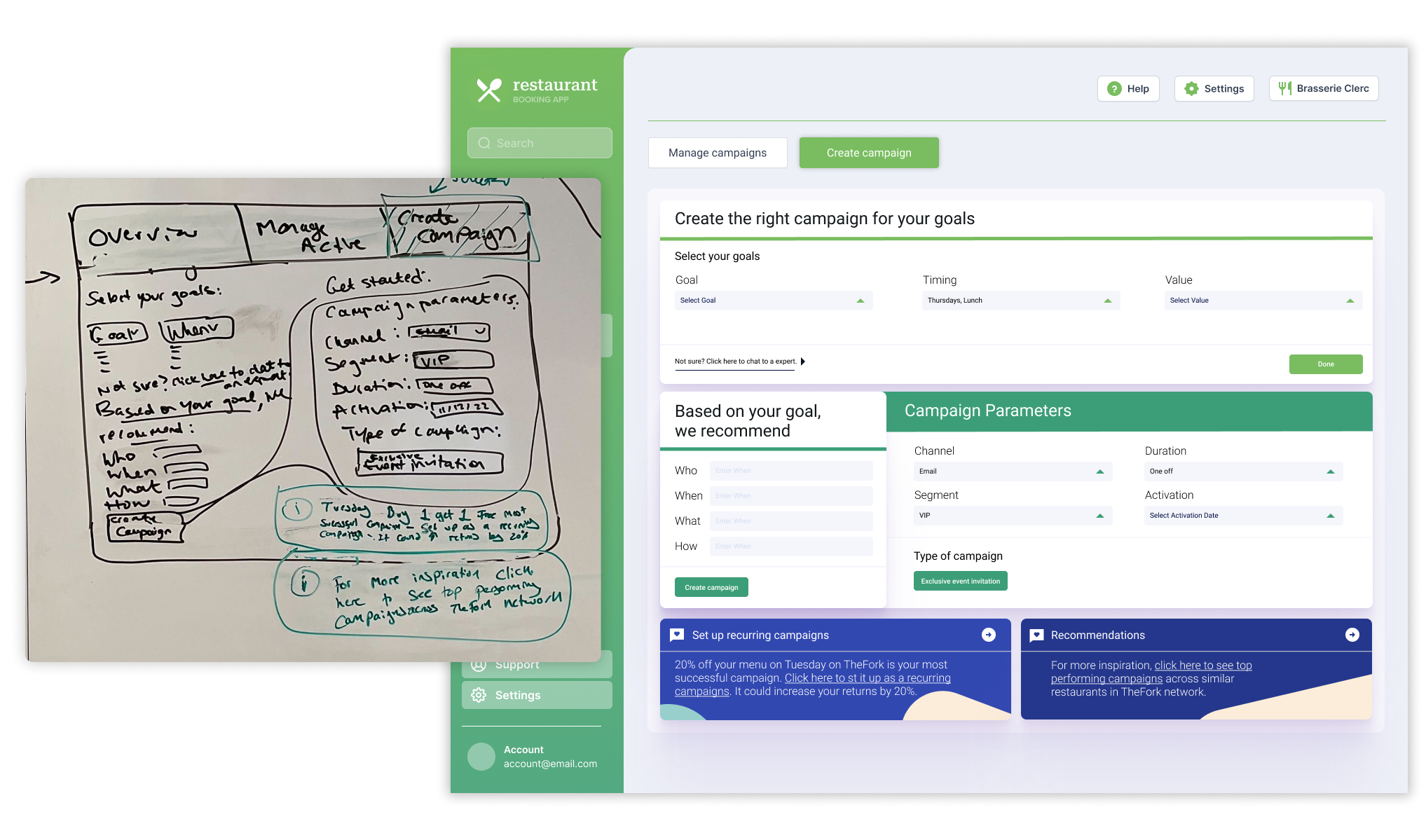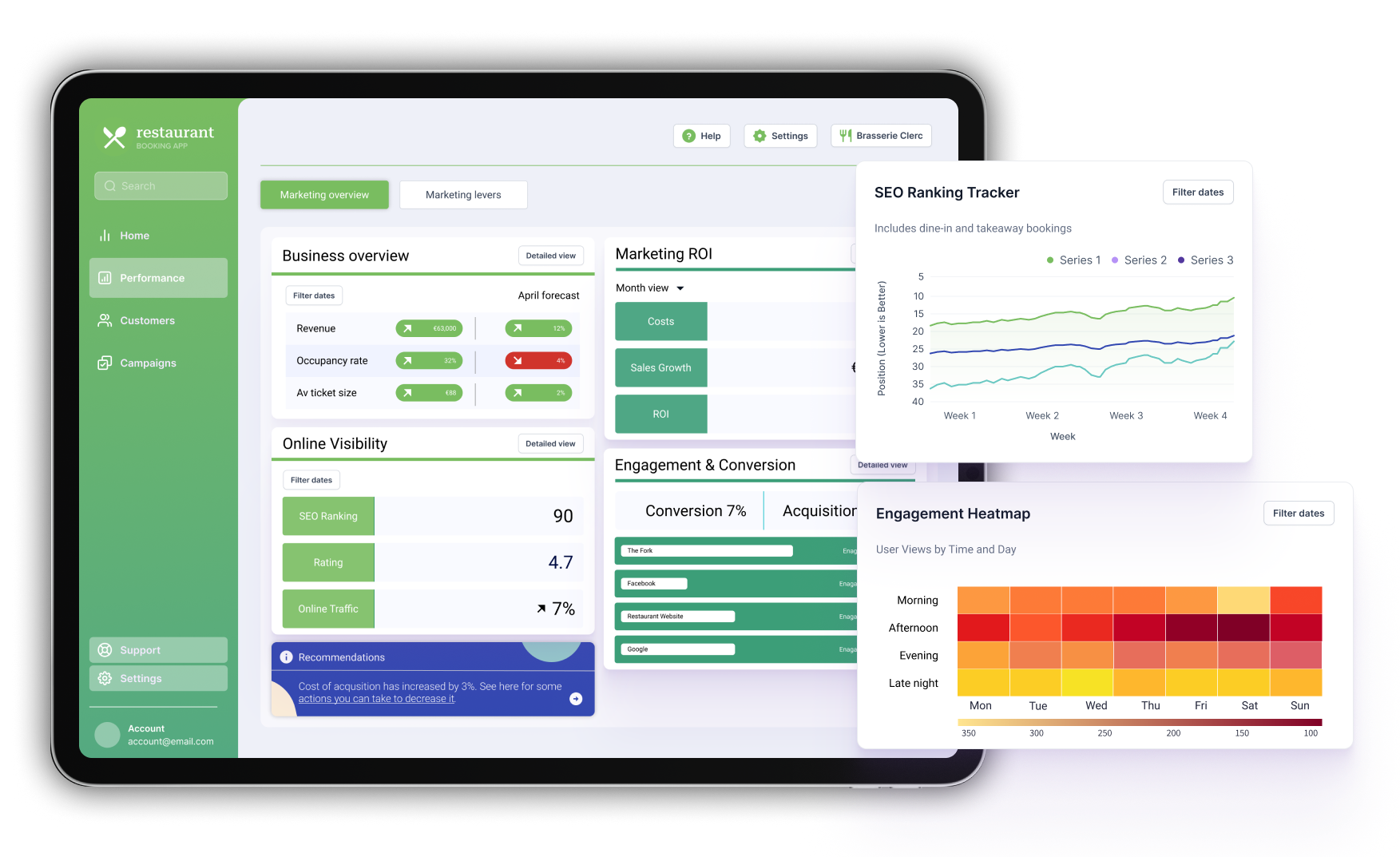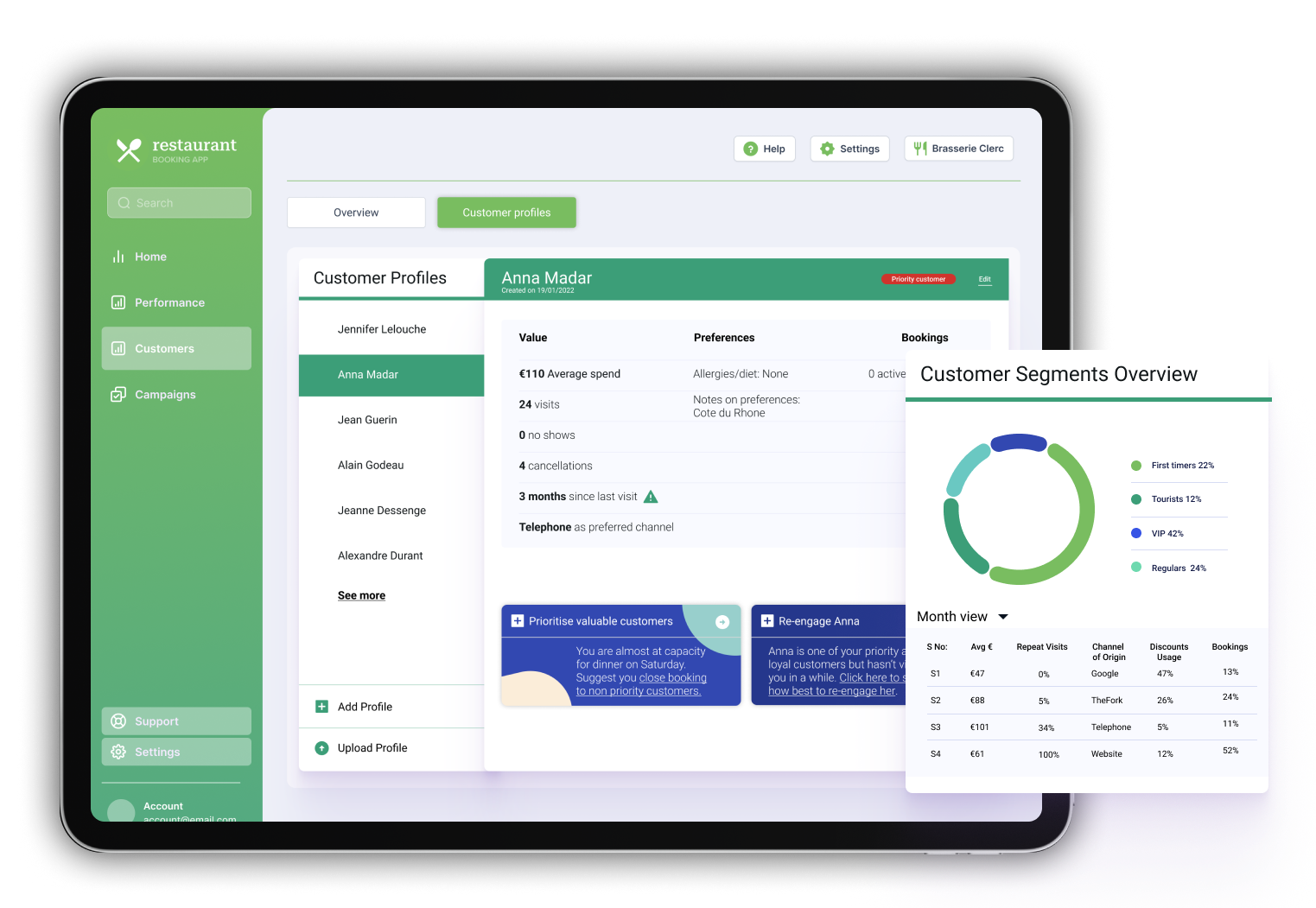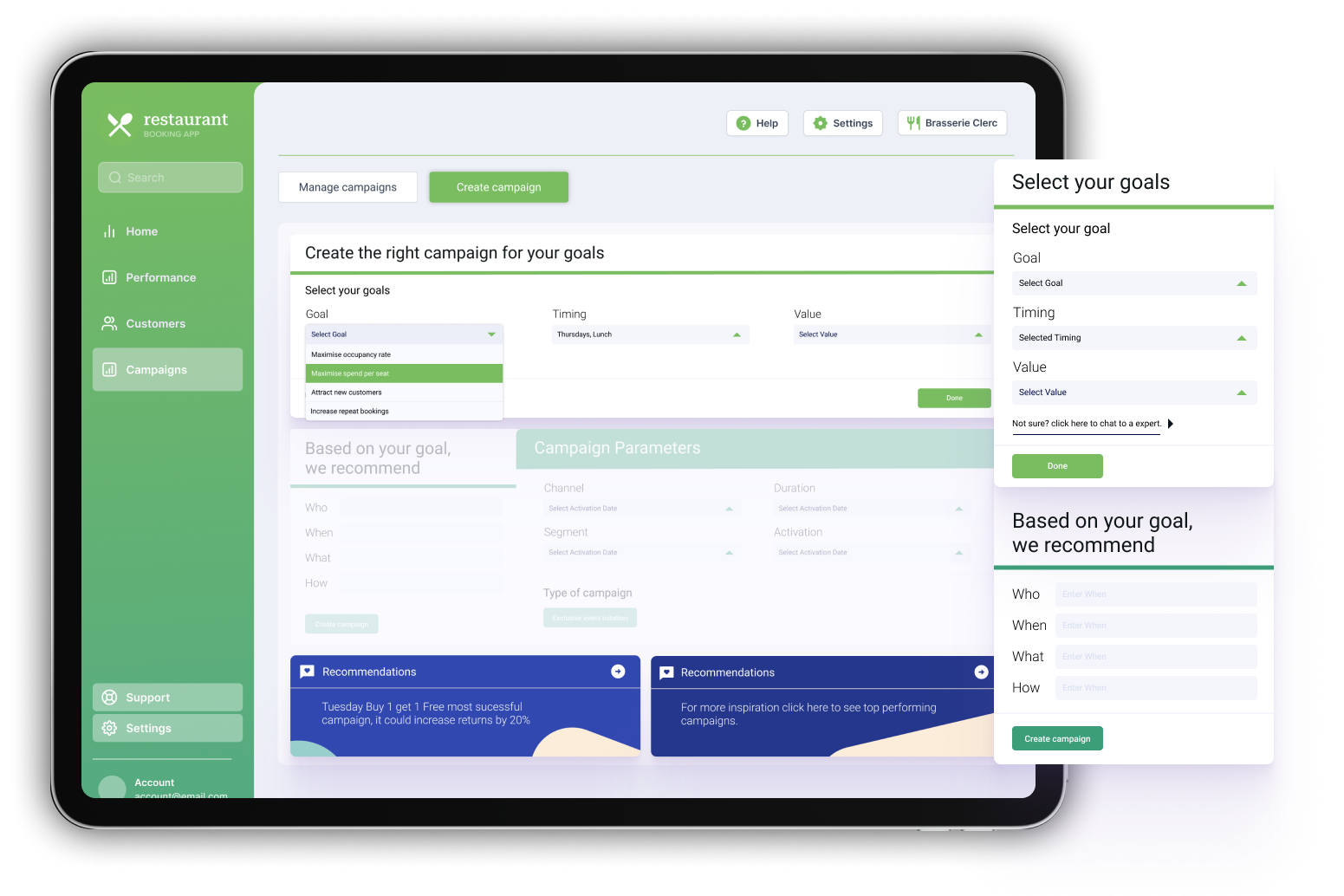Restaurant Booking App
Insights that keep your tables full
The client, a restaurant booking app, needed to improve value for its partners. Restaurants struggled with limited customer insight, no centralised dashboard for performance tracking, and few marketing tools to drive bookings. Our task was to design a streamlined solution that addressed these gaps.
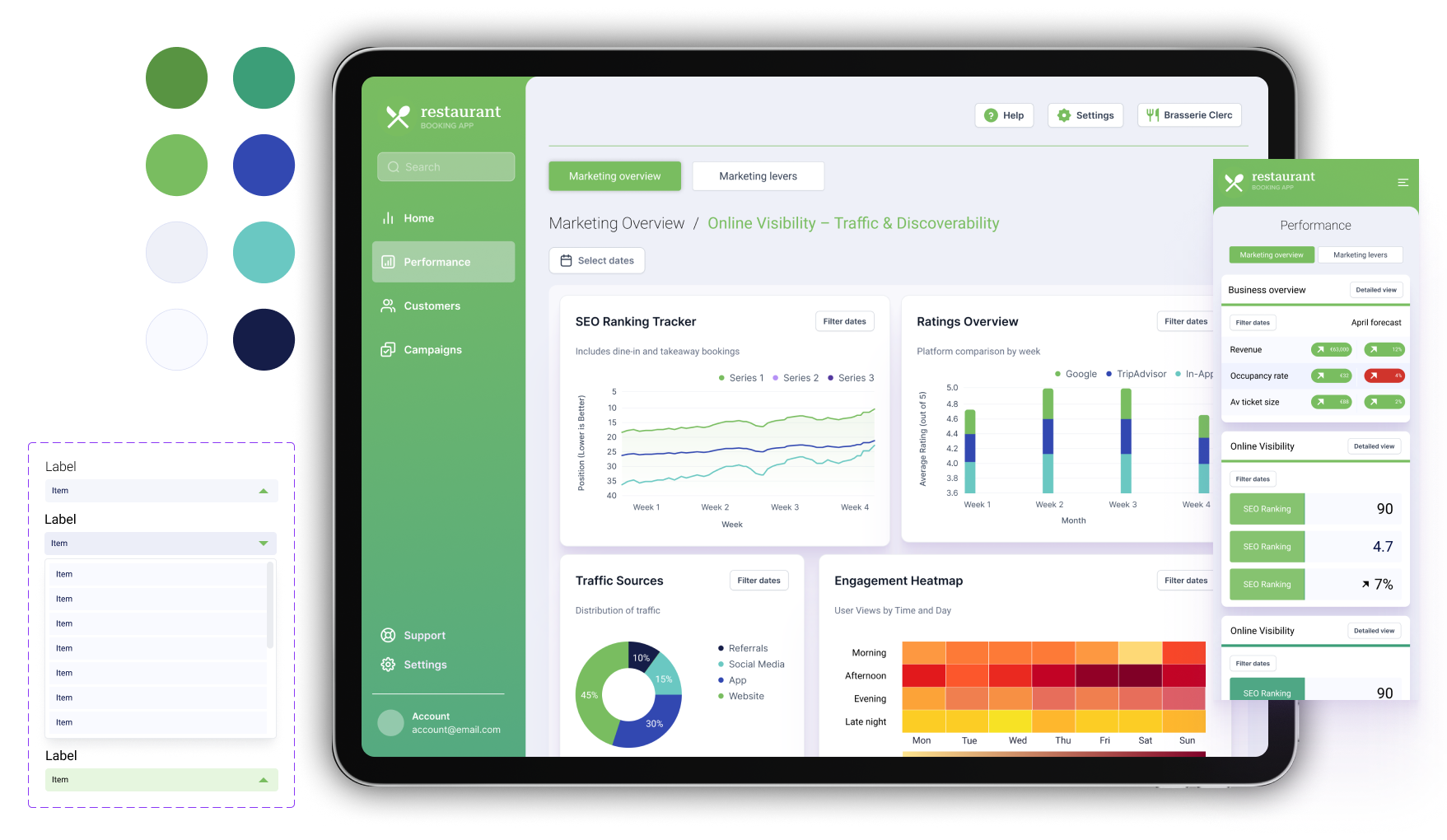
Project type: Booking insights dashboard
Role: Sole UX/UI designer - 1st phase, working with two strategic designers
Industry: Hospitality
Tools: Figma, FigJam, Zoom, Miro
Duration: Q4 2024, 1 month
Role: Sole UX/UI designer - 1st phase, working with two strategic designers
Industry: Hospitality
Tools: Figma, FigJam, Zoom, Miro
Duration: Q4 2024, 1 month
